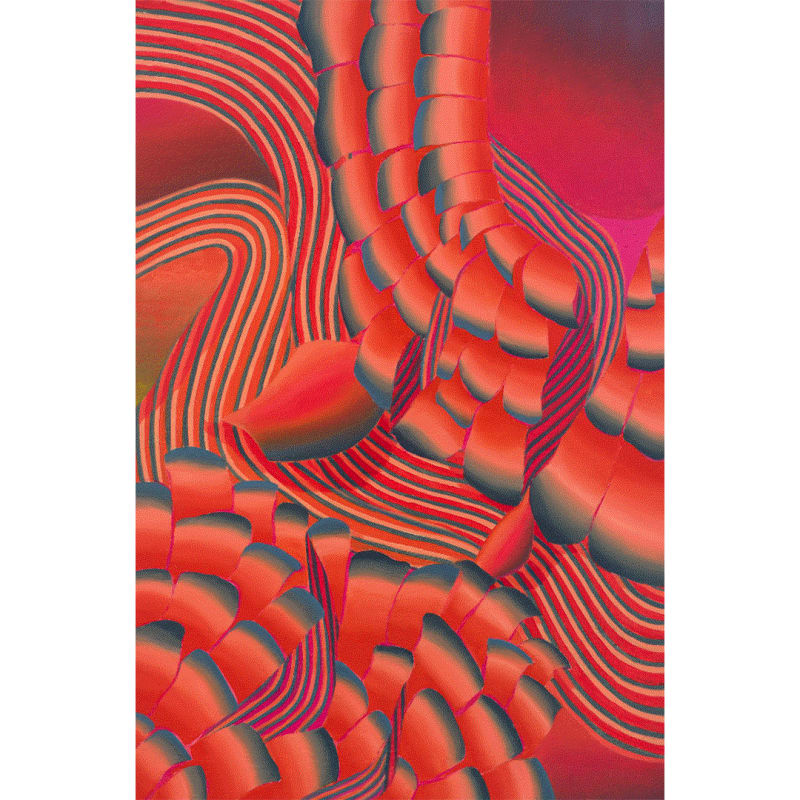Nathalie Karg Gallery is pleased to present Painting as Is II, a group exhibition curated by Heidi Hahn and Tim Wilson. The exhibition runs from June 28 through August 26, 2022 and features work by Lisa Beck, Blinn and Lambert, Robert Bordo, Sarah Braman, Theresa Daddezio, Dennis Delgado, Martha Diamond, Olivia Drusin, Rochelle Feinstein, Jackie Feng, Meena Hasan, James Hyde, Olivia Jia, Marina Kappos, Caroline Kent, Jaena Kwon, Benny Merris, Elizabeth McIntosh, Oren Pinhassi, Nathlie Provosty, Craig Taylor, and Dan Walsh
In their previous curatorial collaboration Painting as Is, exhibited at the Fosdick-Nelson Gallery at Alfred University in 2019, and included artists Beverly Acha, Julia Benjamin, Henry Chapman, Adam Henry, Dana Lok, Stephanie McMahon, James Miller, Bridget Mullen, Alice Tippit, Owen Westberg, and Roger White, Hahn and Wilson sought to bring together a group of artists with a keen interest in the blunt facts of painting. Facts, that when deployed, demonstrate a wide range of pictorial languages that stretch across and live within abstraction and representation—performing a kind of formal call-and-response that is tethered to painting’s rich history but also give rise to each artist’s unique voice.
In this new iteration the curators, who are painters in their own right, hope to expand this field to also include sculpture, film, and photography—all of which speak in this language of painting yet maintain their medium specificity. While on the one hand, the works in this show demonstrate a well understood formal and self-reflexive nature of an art making practice, the crux is rather more to do with an insistent belief, that is simultaneously bound up with a high level of doubt, that the manipulation and rearrangement of the objects of material world can somehow transform into objects of meaning—whatever they may be. These readings, like much of our understanding of the perceptual world, are conjectures that serve as evidence of the porous threshold through which inert materials pass into thought.
Whether molded, projected, rendered, found, built, patterned, poured, sprayed, brushed, scraped, printed, burned, or glued, the artists in this show navigate their own systems of materiality in confident and pragmatic ways. Many works are born from traditional painting techniques like James Hyde’s frescos that seem to recall a thread tying Fairfield Porter, De Kooning, and Jacob Lawrence, the trompe-l'œil work of Olivia Jia which nod to Dutch and Flemish masters Biltius and Gijsbrechts, or the Matissian like collage methods of Caroline Kent. Artists Oren Pinhassi and Sarah Braman look to found materials and sculptural elements culled from nature and the vernacular of public/domestic architecture and design. That their work may feel better suited for the show: Sculpture as Is, speaks to the cannibalistic nature of painting—the conceit that all things can be reduced to making marks on the wall, albeit for a reason. Film and photography are also on display here. For example, in the work of Blinn and Lambert (a collaborative effort by artists Nicholas Steindorf and Kyle Williams), the digital and analog are blurred in their dual-16mm film projections that combine a hybrid process of digital 3D modeling, 2D digital animation, and long-exposure photography. In the case of Benny Merris, painting as photography becomes center stage—that is to say, the medium of photography used as a way to document the performance of painting. While Dennis Delgado applies facial recognition software to the narrative films by filmmakers of color. Whereby the collected data becomes the material from which single photographic portraits are generated—“a kind of record of visibility and representation as seen through the eyes of artificial intelligence.”
Altogether, historical influence, intentionality, and the essential facts of the temporal surfaces they create, in essence, become baked-in to the work. The primacy of object-ness in these pieces seems to suggest a kind of skepticism or modesty in their ability to communicate. Yet, this ‘take nothing for granted’ approach has the uncanny consequence of communicating, with urgency, those very intentions and concerns.
